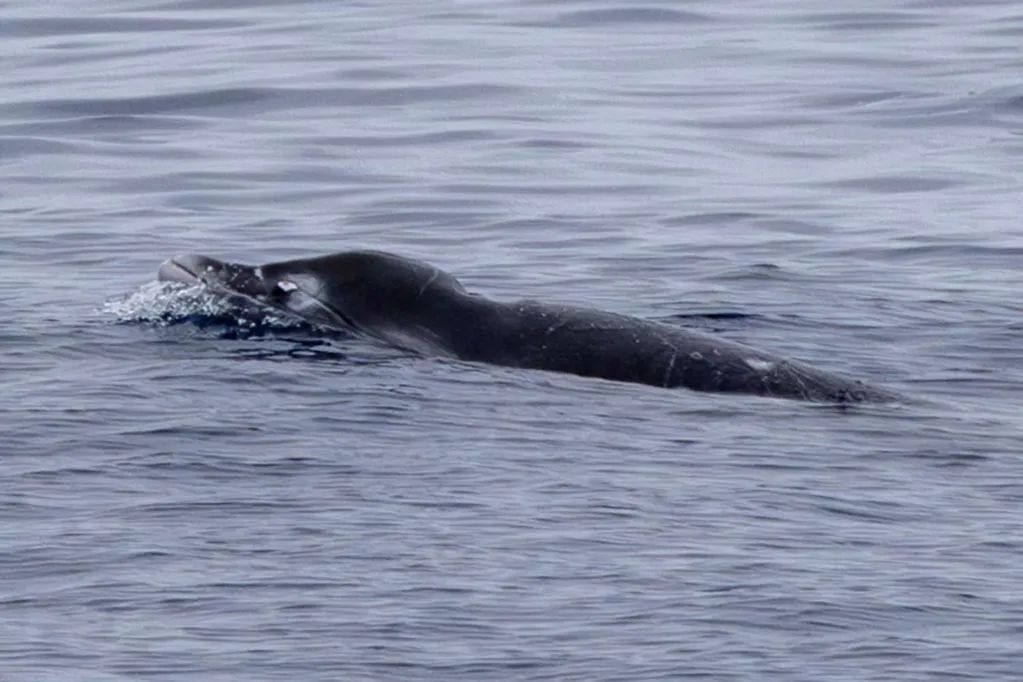Kelli Bender is the Pets Editor at PEOPLE. She has been working at PEOPLE since 2013. Her work has previously appeared on MTV, The Frisky, Vice, and Best Friends Magazine.
A research trip along the coast of Baja California, Mexico, led to a world first.
Scientists from Oregon State University and the U.S. military's Naval Information Warfare Center were aboard the Pacific Storm research vessel in June 2024, searching for the elusive ginkgo-toothed beaked whale and other rare sea creatures, according to The Guardian. The ginkgo-toothed beaked whales are so rare that, until this voyage, there were no photos of the species alive in the wild, only shots of dead ginkgo-toothed beaked whales found on beaches.
While on this 2024 trip, researchers spotted what they believed were juvenile beaked whales surfacing and then disappearing beneath the water's surface. Photographer Craig Hayslip snapped shots of the swimmers, and researcher Robert Pitman fired a small arrow to gather a tissue sample from one of the whales.
This sample was tested, confirming that the animals were living ginkgo-toothed beaked whales, meaning Hayslip captured the first photos of the species alive in the wild. These findings were shared in the paper "First At-Sea Identifications of Ginkgo-Toothed Beaked Whale," which was published in Marine Mammal Science in 2025.
Before the results of the tissue sample test came back, the researchers aboard Pacific Storm felt confident they had just witnessed a once-in-a-lifetime moment.
"I can't even describe the feeling because it was something that we had worked towards for so long," Elizabeth Henderson, a researcher at the U.S. military's Naval Information Warfare Center and lead author of the paper, told The Guardian. "Everybody on the boat was cheering because we had it, we finally had it."
Since 2020, Henderson and other researchers have been tracking a group of whales producing a distinctive call, which they believed belonged to Perrin's beaked whales, another whale species never seen alive in the wild.
For years, the research group visited the same area where they had heard the distinct call and, in 2024, finally found part of the source -- the two ginkgo-toothed beaked whales Hayslip had photographed.
The Pacific Storm research vessel played a key role in the success, providing hydrophones to detect underwater whale calls. The equipment allowed the researchers to pinpoint the area emitting the ginkgo-toothed beaked whale's unique call without first sighting the animals, which are among the deepest-diving mammals in the world.
Beaked whales often spend their lives under deep water, usually only surfacing for a few moments to get air before diving back into the ocean.
Researchers are still discovering evidence of new beaked whale species, with the most recent find occurring in 2021, per The Guardian.
"The Society for Marine Mammalogy has a list of 94 accepted species of cetaceans," Pitman told the outlet. "A quarter of those are beaked whales, but most people have never even heard of them. These are the largest, least-known animals left on the planet."
The retired researcher isn't done searching for whales yet. Pitman added that he plans to see all 94 of the "accepted species of cetaceans" with his own eyes, and is up to 90, including the ginkgo-toothed beaked whale he spotted.
He is now focused on the Perrin's beaked whale, which has still never been observed alive by scientists.
